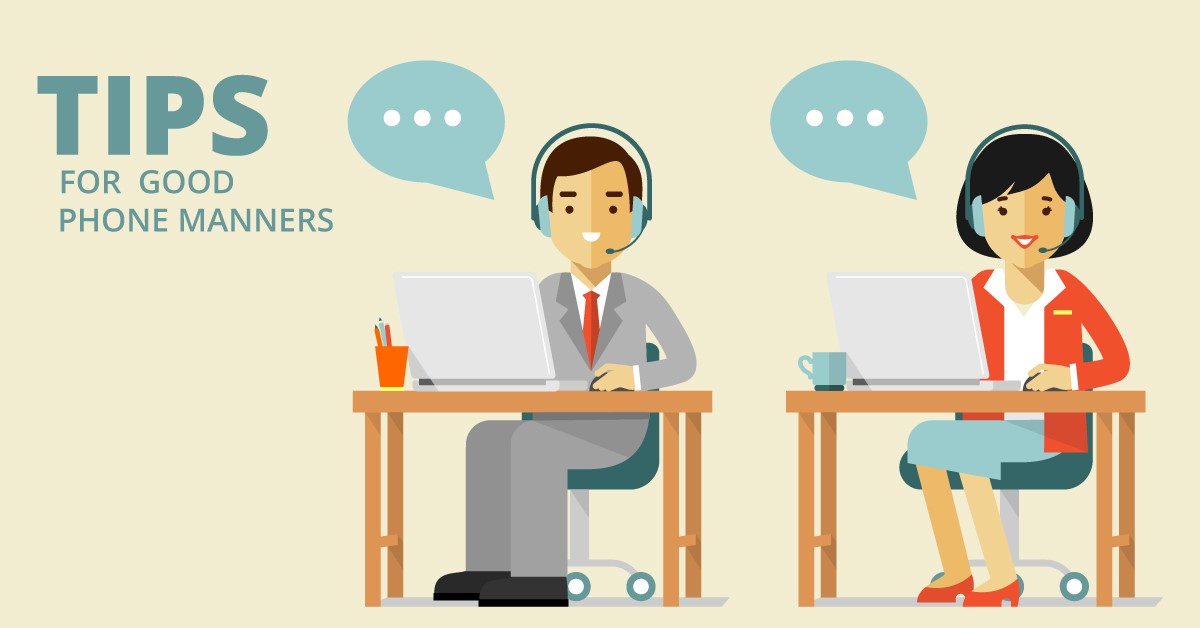
Importance of Telephone Etiquette (Phone Manners)
While effective phone communication seems like a lost art in an age of widespread email and texting, it remains a vital part of interactions between customers and companies. Unlike these newer forms of communication, phone communication involves more than just words. The tone you use while on the phone can mean the difference between creating customers and losing customers, even if your words are carefully chosen.
Tone conveys your general attitude and lets the per¬son you are talking with know how you feel about them. Often, a phone call provides a customer with a lasting first impression, and we all know the importance of first impressions. If you’re talking to a repeat customer, your tone impacts their ongoing experience. For these reasons and more, it is critical to develop a tone that is polite, confident, and clear.
Tips for Good Phone Manners
Here are five tips for good phone manners:
- 1. Smile when you talk to customers. Did you know that only a small percentage of communication is verbal? A large portion of a message is actually conveyed through body language and the tone of your voice. On the phone, we do not have the facial expressions and gestures that often help us communicate in face-to-face interactions.
Although the customer cannot see you, your tone of voice determines their idea of your facial expression. Conversely, your facial expression also determines your tone of voice. Therefore, one way to improve your tone is to smile while you talk to customers. Smiling affects the sound of your voice, giving it a warm and pleasant tone. Of course, it may be difficult to speak clearly with a thousand-watt smile on your face, so try smiling gently (some refer to this as “smiling with your eyes”). With a gentle smile, you can relax your throat and speak clearly while maintaining a welcoming and friendly tone.
- Let the customer finish their sentences. You might think that you are showing attentiveness by offering a prompt response before the customer finishes asking a question. However, this approach has an opposite effect. Cutting off a customer’s speech can make you seem rude, uncaring, and inattentive. Letting callers finish their sentences shows that you are listening. In turn, taking this approach will help you to become a better listener.
When actively listening to a customer, you’re not predicting what they’re going to say or trying to think about your answers (which may turn out to be irrelevant). Instead, you will get the whole story, which will allow you to provide the most effective customer assistance. If you have an irate customer on the phone, listening attentively will most likely help them to calm down.
- Be confident. Show that you know what you are talking about when helping a customer on the phone; be prepared and use a confident tone. Although you should avoid simply reading rehearsed answers, you can begin to notice patterns in responses you provide to frequently asked questions. Make note of some useful words and phrases. If you are a new employee, it might help to have a “cheat sheet” with basic information for quick reference. When you are equipped with this knowledge, your confidence will be reflected in your tone.
Be honest with the customer; if you don’t know something, don’t get flustered or make something up, and don’t be afraid to pause briefly and consider what you need to say next. Repeat the information back to the customer, rephrasing in your own words, to show them that you listened and understand. Ask questions when necessary. Be prepared to connect the customer to the appropriate channel or track down needed information.
- Sit up in your chair. Breathing patterns greatly affect your vocal delivery. As the air from our lungs is exhaled, it passes over the vocal chords, which vibrate to make a sound. This sound affects the way we speak.
When you slouch in your chair, your body is crunched, your shoulders and chin are drooped down, and the passageway from your lungs to vocal chords becomes restricted, making you sound muffled, or worse, bored and uninterested. Sitting up as you speak fills your lungs with air and raises the pitch of your voice to an appropriate level. Additionally, sitting up in your chair while talking to a customer will reinforce your sense of confidence and enable you to be more engaged in the phone call.
-
Adjust your vocal quality. Make your message as clear as possible. As you might know by now, this does not just involve your choice of words. Speaking clearly includes elements of vocal quality such as volume, pitch, rate, and inflection.
Try not to speak too loudly or too softly. Speaking too loudly comes off as aggressive, brash or overbearing, while speaking too quietly can make you seem shy or simply difficult to understand. Pitch is also an important factor, as a too-high pitch can sound childish and lacking in authority, and a too-low pitch can sound harsh, particularly over the phone. As for speech rate, speak slowly and clearly, making sure to enunciate words. If you speak too quickly, you can seem rushed or impatient.
Lastly, be sure to avoid a robotic, monotone voice. Emphasize key words and vary your inflection naturally, as you would in normal conversation. Overall, you want to balance a professional tone with your own enthusiastic voice.
Displaying a courteous tone over the phone goes a long way in providing effective customer service. Of course, this list of phone manners for effective tone is not exhaustive, but practicing these tips will surely boost your telephone etiquette.
At Responsive Answering Service, all of our representatives are well-trained and prepared to give your customers the best possible service keeping these great tips for good phone manners in mind. Call us today and we can discuss a custom program that works for you and your business.


















 Receive Your Free Consultation
Receive Your Free Consultation